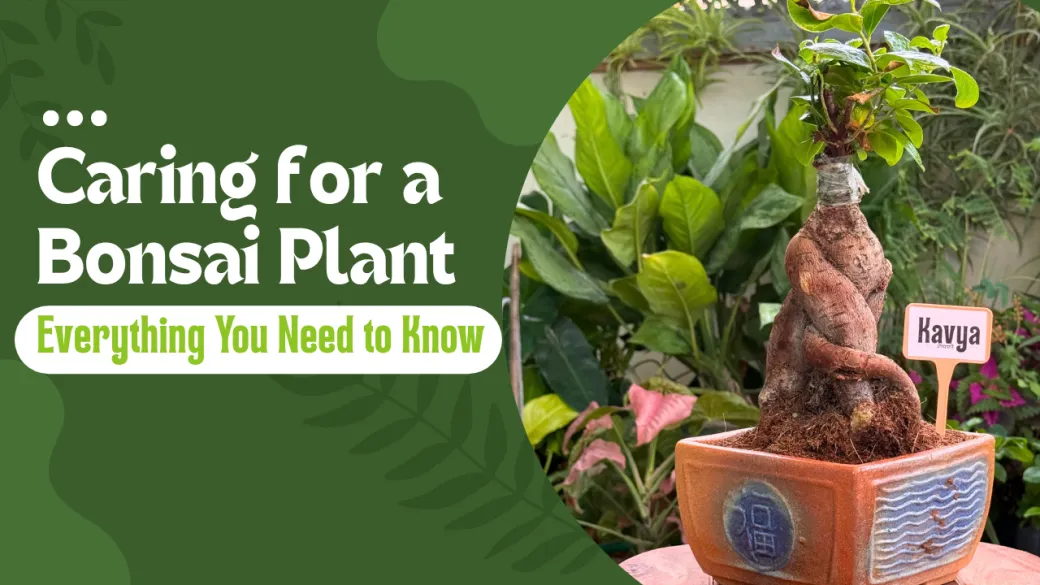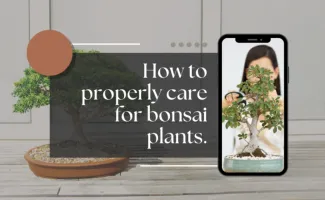Caring for a Bonsai Plant: Everything You Need to Know
Bonsai trees are tiny powerhouses of beauty, calm, and nature—all in one pot. Whether you're a seasoned plant lover or just starting out, bonsais can be a rewarding addition to your space. They’re not just decorative—they’re living, breathing art that reflect patience and care.
But here’s the good news: taking care of a bonsai isn’t as complicated as it seems. With the right mix of light, water, and attention, your miniature tree can grow healthy and strong for years.
Let’s break it down into simple, doable steps.
- Light: Let the Sunshine In
Just like their full-sized cousins, bonsai trees need sunlight to grow. Most species prefer 5–6 hours of direct sunlight daily. If your bonsai is indoors, place it near a bright, south-facing window. Light intensity drops sharply even a few feet away from the window, so keep it as close to natural light as possible. For darker spaces, consider using grow lights.
Watch for signs of low light: pale leaves, slow growth, and weak branches.
- Water: Not Too Much, Not Too Little
Bonsai trees live in small pots with limited soil, which dries out quickly. Water your bonsai when the top layer of soil feels dry. Avoid sticking to a fixed schedule—observe your tree daily.
Underwatering causes the tree to dry out.
Overwatering leads to root rot and yellowing leaves.
Water until you see it draining out from the bottom. Many bonsai pots come with a tray to catch this excess water—just make sure it's not sitting in water for too long.
- Pruning & Shaping: Keep It in Style
Pruning is key to keeping your bonsai miniature and beautiful.
Maintenance pruning involves trimming new shoots and leaves to maintain the shape and improve air/sunlight exposure.
Structural pruning is more intensive and should be done when the tree is dormant (usually in winter).
You can also use thin wires to gently shape branches. Just don’t forget to remove them before they dig into the bark.
- Feeding Your Bonsai
Because bonsai soil holds fewer nutrients, feeding is a must. Use a recognized bonsai fertilizer—not regular plant food, which can damage the roots. For indoor bonsais, feed them once a week during spring, summer, and autumn.
Always fertilize after watering, never on dry soil.
- Choosing the Right Soil
Bonsai soil needs to do three things well: drain water, hold moisture, and allow airflow. Mix in components like volcanic rock, clay, and coarse sand for the right balance.
- Repotting: Give It Room to Grow
As the roots grow, they need a refresh. Repot your bonsai every 2–5 years (less often for older trees). This keeps roots healthy and prevents the plant from starving.
Basic repotting steps:
Gently remove the tree.
Trim outer roots with sharp shears.
Remove any rotting or overcrowded roots.
Add fresh soil and replant securely.
- Positioning: Balance Heat, Light & Humidity
Keep your bonsai away from heaters, ACs, and drafts. They also love humidity, so mist the leaves occasionally or place a humidity tray nearby.
- In Short…
Taking care of a bonsai is all about balance—sunlight, water, pruning, soil, and a little love. It might take a bit of practice, but once you find your rhythm, bonsai care becomes a peaceful, rewarding ritual.
Happy Growing!

















